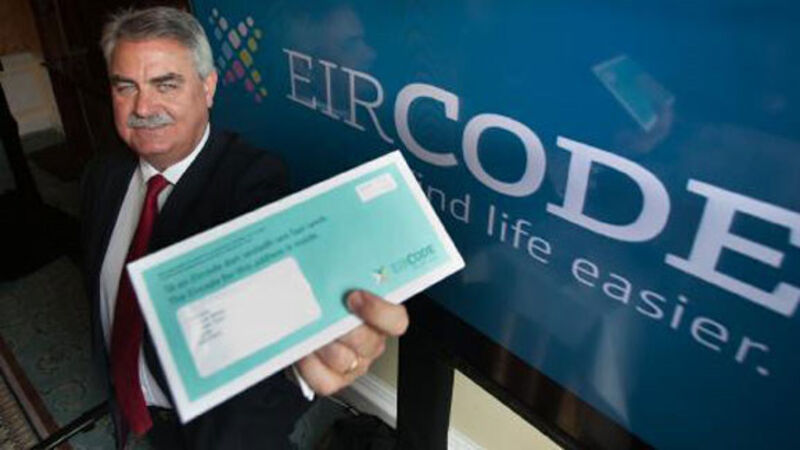News Q&A: Eircode applies a unique postcode to every address

You should memorise your Eircode and keep a copy of it somewhere handy.
An Eircode is a seven-character code, consisting of three characters for your geographical area, and four characters for your address.
Addresses aren’t changing. Just add the Eircode onto the end of your existing address.
There are many benefits to using an Eircode, such as allowing delivery and service companies to accurately identify addresses, so your deliveries get to the right location, and making it easier to shop online. It also makes it quicker and easier for medical emergency services to locate addresses.
For the public, there is no need to apply for an Eircode, one is being assigned to each address. During the launch, a letter will be sent to each residential and business address, notifying the occupant of the Eircode.
You should keep the Eircode letter within easy reach so that you can refer to it easily in the future. If you receive any state benefits such as a pension, social welfare or a grant scheme, you do not need to do anything, these services will continue as normal.
Over time, you will see an Eircode included on mail, and you may be asked for an Eircode when arranging delivery of goods and services, or when shopping online.
The Eircode should be placed at the end of your normal address, just below the county. If you are writing to a person in Ireland from overseas, the Eircode should go between the County and Country details.
For the general public, there is no cost.
Having a unique Eircode for every address helps to solve two significant problems associated with addressing in Ireland. The first is that over 35% of the addresses in Ireland are non-unique, that is, where a property has the same address with a least one other property.
The second is that the address for any given premises can have a number of different forms. Applying a unique postcode to every address helps to solve these two problems.
The first letter of the Eircode will not be linked to a county or city (with the exception of Dublin, where the district codes have been in place for many years), as the Eircode design is not based on county boundaries, and is language neutral.
Generally, all postal addresses that currently receive mail will be assigned an Eircode.
No government department is making Eircode mandatory. Although they may ask you for an Eircode, you are not obligated to provide it.
For private organisations, it is up to each organisation to determine how they want to use Eircode – we have no say over how they conduct business.
Many overseas companies already insist on using a postcode when ordering online, as they have already seen the benefits/efficiencies of using a postcode.
You can use the Eircode Finder to find or check an Eircode. Or if you are travelling to or writing to a particular address, you can call the individual and ask them.
The Eircode Finder is for the public who occasionally need to look up address details.
Eircode use source data supplied by An Post GeoDirectory Limited, which sources information from Ordnance Survey Ireland, The Placenames Branch (Department of Arts, Heritage and the Gaeltacht) and the Universal Service Provider for postal services in Ireland, An Post.
Based on the information provided, Eircodes are generated, assigned and disseminated to the corresponding postal addresses.
The National Ambulance Service will be using Eircodes once their new dispatch system goes live, which is planned for September this year.
The Fire service and An Garda Síochána plan to use Eircodes and may do so as their dispatch systems are upgraded over the coming years. An Eircode will be used as an addition to the address and not as a replacement, so all emergency services will always ask for the address.
Once assigned an Eircode cannot be changed.










